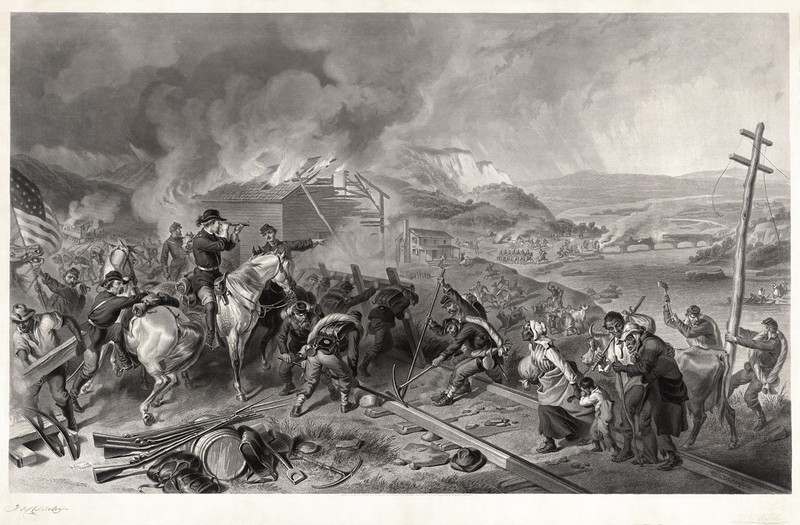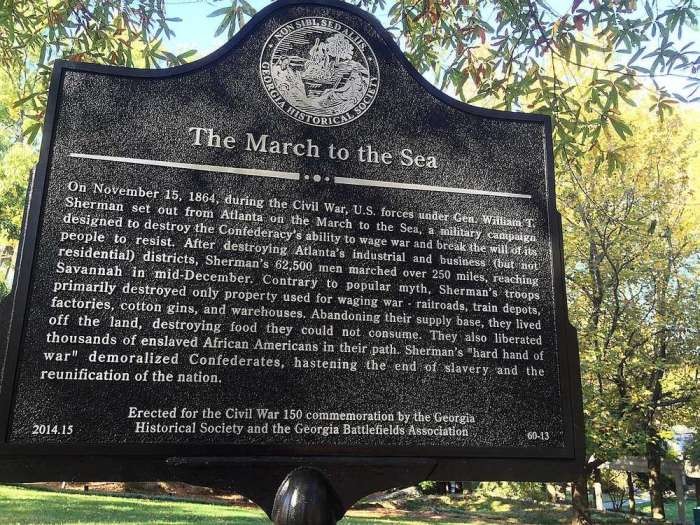Sherman's March in Savannah Historic Marker
Introduction
Text-to-speech Audio
Images
Sherman's forces operated under a scorched earth policy - anything they couldn't consume or use for themselves immediately was destroyed, leaving the state of Georgia financially unprepared to continue fighting.

One of many like it, this particular historical marker about the long term impact of Sherman's March was unveiled in 2014 and commemorates the 150th anniversary of the Northern campaign into Southern territory.

Backstory and Context
Text-to-speech Audio
Moving deeper still beyond Atlanta and further into the heart of enemy territory, Sherman and his men left nothing to chance. They lived mostly off the land for this campaign, allowing them to destroy any extra food or supplies they came across in one of the towns in their path. To prevent the transportation of goods by rail, the men burned the wooden ties, and heated the metal rails until they were pliable enough to be bent around trees. Though Sherman only targeted things that might be useful for as Confederate military effort, that didn’t leave much safe – corn and cotton crops, livestock, telegraph lines, private homes, and feed granaries were all targeted equally and were equally wiped out by the invading Union forces.
Upon reaching Savannah
in December 1864, the decision to ransack the city, as Atlanta and other cities
and towns along the campaign trail had been ransacked, was up in the air. Lt.
General Hardee, who had been left with a small army to defend the city elected
to flee with his men to South Carolina, leaving Mayor Richard Arnold to
surrender the city into Sherman’s hands. On the 22nd of December,
Sherman set up his headquarters at the Green-Meldrim House, overlooking Madison
Square.
While no further damage was done to the city (other than Sherman melting down the clappers of the church bells at the neighboring St. John's Cathedral) the citizens of Savannah and indeed the entire South were terrified and psychologically incapable of maintaining morale for the Confederate Army. The South felt the impact of Sherman's March, even after the war came to an end. Left without a great deal of income due to the complete destruction of crops and livestock, paired with an almost complete overture of the former system Southerners struggled for years to allow their economy to bounce back, which can occasionally still be seen and felt to this day.
Sources
Bailey, Anne J. “Sherman’s March to the Sea.” New Georgia Encyclopedia. September 5, 2002. Edited: October 26, 2018. Accessed: February 25, 2019. https://www.georgiaencyclopedia.org/articles/history-archaeology/shermans-march-sea
McCarley, Britt J. The Atlanta and Savannah Campaigns: 1864. Washington, DC: Center of Military History, 2014.
